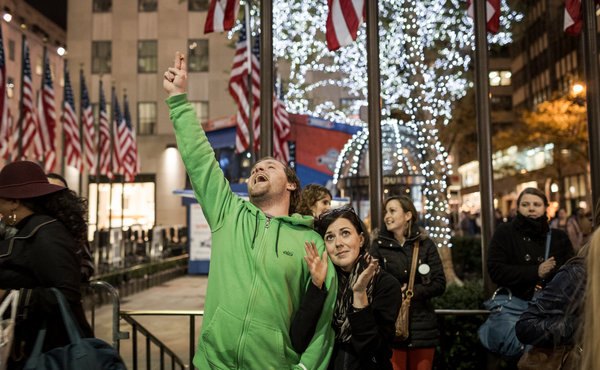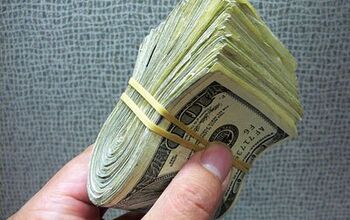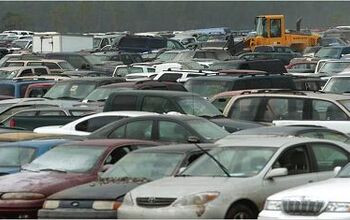Hammer Time: Cash For Sandy
During the next several weeks you are going to be exposed to a lot of pointless hysteria about used cars prices in the Northeast.
Journalists will point out the extremes and the outliers to a media audience that is always easily attracted to the extremes and outliers of our society.
But it won’t be the truth. The real bump in traffic related to Hurricane Sandy won’t be with used cars at all.
It will be with new cars.
Just like Hurricane Katrina in 2005 which destroyed well over 600,000 cars and trucks, Sandy’s estimated totaling of 250,000 vehicles will likely generate four types of buyers in the car market.
1. The Late Model Customer
Consumers who have a vehicle that is between 1 and 3 years old will, in the overwhelming majority of cases, be buying new. Why? Because the used car prices for vehicles that are 1 to 3 years old were already exceptionally strong even before Sandy swept through the Northeast.
2009 and 2010 new car sales were down by more than 30 percent from their 2007 peaks. This lack of demand helped catapult wholesale prices to new historic highs this past year, which were further helped by the strong recovery in used car sub-prime financing.
These late model vehicles, the few that exist, are already usually selling for anywhere between 75% to 110% of retail prices due to the lack of supply and improved access to credit. Based on those two factors and a further increase in demand, you will likely see most late model customers opt for a new car instead of an overpriced used one.
2. The Used Car Customer With Full Insurance Coverage
Your car was worth perhaps $5,000? Or $10,000?
What will you do?
Many of these folks will end up getting the “extra” car. Those cars that are rarely driven due to too many cars in the family household, or the aging of an older relative, will likely go to that friend or relative who has a greater need for transportation.
This is a more common scenario than what is reported in the newspapers because, to be frank, it’s not quite a newsworthy event.
However this transfer of ownership within family and friends usually makes up approximately 10% to 15% of used car transactions depending on who you believe. In times of devastation, this organic replacement of vehicles takes place to a far greater degree than usual.
A. Supply Normalization
There is also the flood of individually owned used cars that will likely still many of the waters of high demand within a month of the current demand spike.
Long story short, folks who have been on the fence when it comes to replacing their car, will read the extreme sensationalist garbage that passes off as journalism, and put their own car up for sale. Prices come down. Usually within a four to six week period, and the imbalance between supply and demand begins to normalize… for used cars.
This stabilization does not happen in the new car market.
B. Media Derived Demand For New Car Sales
New car sales usually increase substantially in the months following a large scale natural disaster, or man made event, because the mainstream media invariably ends up covering the car market to a far greater degree than before.
Often times the increased demand will be attributed to an advertising promotion of a manufacturer that is given headline exposure by the mainstream media. Such as when GM offered 0% financing two months after the events of 9/11.
However, the increase in that demand originates squarely with the fence sitters. Those folks who are normally not part of the new car market. But end up entering the market thanks to the perception of getting the better deal. I believe Sandy will follow the trends of other storms and disasters of creating media coverage that pushes the fence sitters away from the keeping mentality, and into the illusions of the marketplace.
3. The Used Car Customer With Only Liability Coverage
Otherwise known as “the screwed”, most folks associate these car shoppers as the ones who simply don’t have the means to satisfy their automotive ends.
It’s not always true.
In fact, the frugal among us will simply pay cash and drive a car to the point where some major component goes kaput, and then repair that part while continuing onward to the glory of our low-cost lifestyle.
There are a lot more of these folks now than five years ago. But in balance, there are also a far greater number of car owners who are struggling to get by and do this more out of necessity than desire.
For those who lost their car to Hurricane Sandy with only liability coverage, the questions become the following…
“Do you have $1,000 to put down?”
“No? OK. Do you have $500?”
“No? Well…. do you have a job?”
You may think that these questions will be asked at the local buy-here, pay-here used car dealership. As an owner of one, I can tell you that these words are frequently uttered there in rather casual language.
But they are also implied at a new car dealership as well through a credit application. Financing often requires some money down to be approved. Leasing usually requires a bit less.
A lot of potential used car buyers in Sandy’s wake are going to be reading about exorbitantly priced used cars, and decide that a new car, at least in the short term, is the way to go.
This won’t be everyone who has liability insurance. The credit challenged will still be trudging forth to the nearest used car dealership and paying a financial penalty for poor credit or unproven income.
Still those who have decent to middling credit will likely avoid the sub-prime financiers of last resort and go straight to the sub-prime financiers of second to last resort, the new car dealership.
4. The Rest Of Us
We almost forgot the largest slice of the market. Those of us who still would have been in the market for a car even if Sandy had never taken place.
Although we like to think that we are all beyond the clutches of manipulation, many of us, even the wisest and fiercely opinionated among us, fall victim to it.
This is what you will likely see in the months to come.
“Cash For Sandy”
Through the ever loving kindness of banks and other financial institutions, many manufacturers will soon be offering rebates and incentives that will trumpet corporate altruism with the ever righteous emotional chords of patriotism.
“Buy our car, and you’ll pay less! Because you are an American who suffered!”
Images of people helping people, reassuring smiles, and a pissed off bald eagle flying through the mountains, will be intertwined with big round numbers on the screen filled with small print legalese underneath.
It may be a $2500 rebate. Or 0% financing. Or no money down. It may have some gotcha that states you must pay the MSRP. Or has fees that make the financial deal, in effect, a loan with plenty of cost. But it will sound real good. At least for 30 seconds.
My advice is whenever you see these delusional of images of grandeur, don’t spend money. Don’t buy anything. Go to TTAC and read up on some old Hammer Times or take a jaunt through some Junkyard Finds. The best part of being an auto enthusiast is knowing you don’t have to spend new car money to enjoy the hell out of your favorite hobby.
All the best!
More by Steven Lang
Latest Car Reviews
Read moreLatest Product Reviews
Read moreRecent Comments
- Ltcmgm78 Just what we need to do: add more EVs that require a charging station! We own a Volt. We charge at home. We bought the Volt off-lease. We're retired and can do all our daily errands without burning any gasoline. For us this works, but we no longer have a work commute.
- Michael S6 Given the choice between the Hornet R/T and the Alfa, I'd pick an Uber.
- Michael S6 Nissan seems to be doing well at the low end of the market with their small cars and cuv. Competitiveness evaporates as you move up to larger size cars and suvs.
- Cprescott As long as they infest their products with CVT's, there is no reason to buy their products. Nissan's execution of CVT's is lackluster on a good day - not dependable and bad in experience of use. The brand has become like Mitsubishi - will sell to anyone with a pulse to get financed.
- Lorenzo I'd like to believe, I want to believe, having had good FoMoCo vehicles - my aunt's old 1956 Fairlane, 1963 Falcon, 1968 Montego - but if Jim Farley is saying it, I can't believe it. It's been said that he goes with whatever the last person he talked to suggested. That's not the kind of guy you want running a $180 billion dollar company.


































Comments
Join the conversation
Steven: Great read and thoughtful analysis, as usual. I've read and enjoyed just about everything you've written here over the years. Based on my years working in the creative art of marketing of new vehicles for over 30 years, I've developed this philosophy: As a finder, keeper and maintainer of vehicles that deliver high value it all comes down to this irrefutable truth: Nobody rides for free. You either pay a crooked banker every month or an honest mechanic when you need one.
Steven: Great read and thoughtful analysis, as usual. I've read and enjoyed just about everything you've written here over the years. Based on my years working in the creative art of marketing of new vehicles for over 30 years, I've developed this philosophy: As a finder, keeper and maintainer of vehicles that deliver high value it all comes down to this irrefutable truth: Nobody rides for free. You either pay a crooked banker every month or an honest mechanic when you need one.